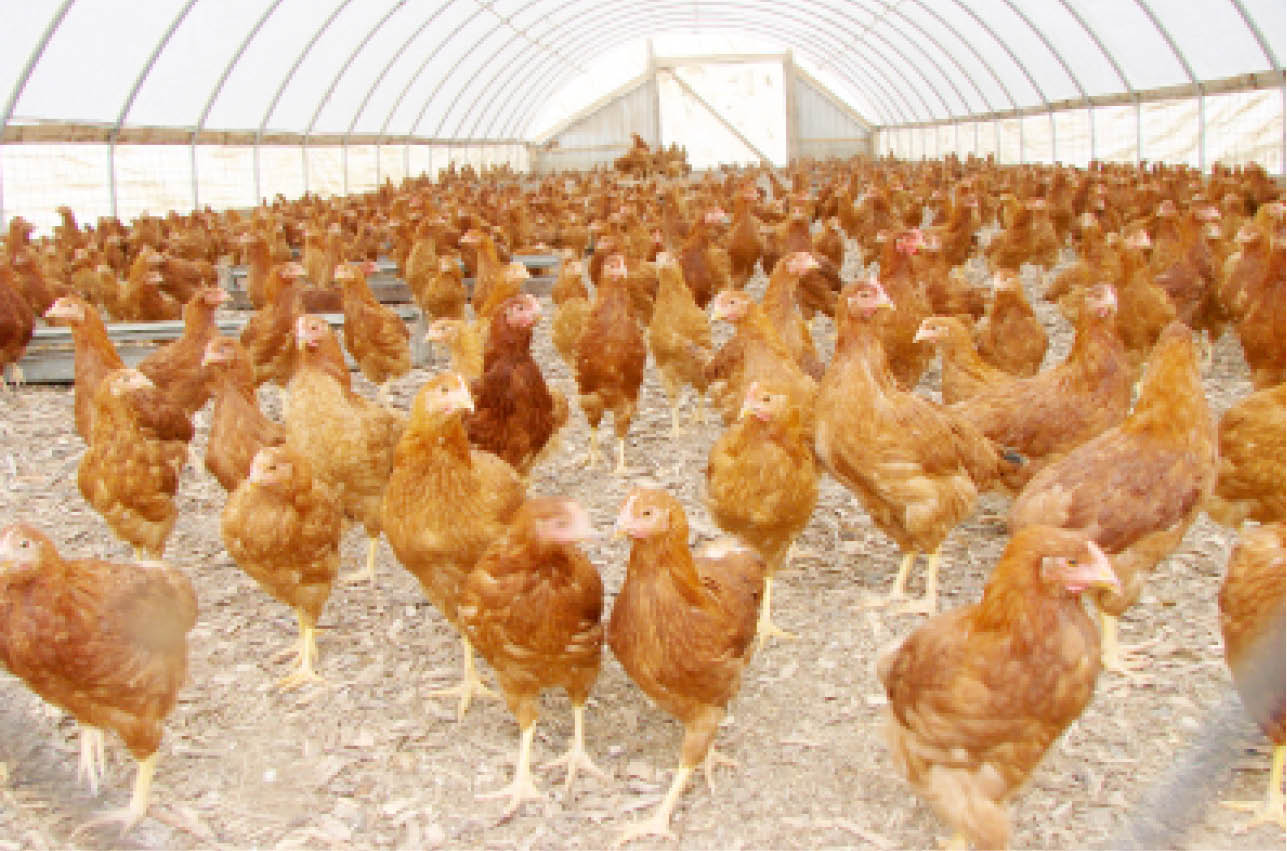AGRO SOLUTIONS Animal feed: Tips for cutting costs and reducing wastage
Feed accounts for 65 to 75 per cent of a poultry or pig farmer’s total input costs. Feed expert Dr Leon Ekermans spoke to Glenneis Kriel about strategies to reduce these costs and prevent wastage. To get the most out of your feed, start with the most efficient animals for your production environment. So says […]

FILE PHOTO: Poultry farm
Feed accounts for 65 to 75 per cent of a poultry or pig farmer’s total input costs. Feed expert Dr Leon Ekermans spoke to Glenneis Kriel about strategies to reduce these costs and prevent wastage.
To get the most out of your feed, start with the most efficient animals for your production environment. So says Dr Leon Ekermans, director at Bester Feed and Grain.
Ekermans adds that the feed efficiency of genetically improved animals is significantly higher than that of indigenous breeds.
Since the early 1960s, the feed conversion ratio of broilers for example, has more than halved, with modern broilers requiring about 1.6kg of feed for every kilogram of weight gained.
Having an animal that is genetically feed- efficient is not enough, however, as feed efficiency is also influenced by factors such as stress, environmental conditions, feed quality and ingredients, as well as the way in which the feed is provided.
The animals should therefore be weighed regularly to determine if they are meeting targeted growth norms, as predefined by suppliers, and this growth should be counterbalanced by the volumes of feed given.
“Most farmers are good at measuring growth rates, but few keep track of the volume of feed given, unless they have large operations where feed intake is measured automatically. If you don’t know how much feed you’re giving, you won’t be able to determine your efficiency or identify irregularities,” says Ekermans.
Avoid stress
Stress may have a negative impact on both feed intake and digestion, so it should be prevented as far as possible.
Animals’ feed ratios are governed by their age and productive stage.
Overstocking usually leads to increased competition for food and water, which exacerbates the situation. “Access to sufficient clean, potable water is imperative, as feed intake and digestion will be affected negatively if the animals don’t drink enough water.”
“The general recommendation is that at least a third of the animals should be able to use a feeder or drinker with ease at any given time.”
But it also does not pay to have adequate stocking rates if equipment is not working properly. Feed and drinking equipment should therefore be checked regularly for breakages, leaks or blockages, and cleaned and maintained to ensure optimal functioning.
This is especially true for layers, whose egg production will decrease significantly if they do not have access to sufficient water for three to four hours at a time.
Climatic conditions can also turn into stressors. Ekermans explains that feed intake will decline significantly under hot conditions, and increase the colder it gets. Unfortunately, the higher intake during cold conditions is not translated into growth, but used by the animal to stay warm.
Most farmers these days minimise the impact of climatic conditions on pigs and poultry through the use of heating, fans and humidity control systems, or by closing or opening houses to increase or reduce ventilation.
Feed should be stored and managed correctly to prevent decay and wastage. The general aim is to keep the feed dry and under cool conditions.
“The quality deteriorates quickly and the risk of fungal contamination increases when feed is kept in direct sunlight or hot sheds,” says Ekermans.
It is wise, he adds, to lock up feed to prevent theft.
To mix or not to mix
In most cases, says Ekermans, it is better to buy preformulated feed from a feeding company than mix it yourself. As an added benefit, most feed companies offer feeding advice along with their product.
Mixing your own feed, in contrast, will not only require investing in expensive equipment and infrastructure, especially if you have an intensive poultry or pork production system, but will demand additional management, labour and skills to ensure the production of good-quality feed.
You will also need to take into account the cost of feed ingredients, such as maize and oilcake, and transportation costs to get them to the farm.
The situation is complicated by the fact that pigs and poultry may require between nine and 11 different rations, depending on their development and production stages.
If you produce feed ingredients such as maize or lucerne on the farm, it might make sense to buy concentrates that exclude these ingredients, but this will also require mixing equipment that could make the cost unviable.
“Alternatively, you could deliver the ingredients at the supplier and then negotiate a discount on the feed,” Ekermans suggests.
Waste products, and safety
Many farmers supply their animals with what can be considered farm waste products, such as fruit and vegetables that were not suitable for the market, whey, bread, or soya or canola meal.
Before using by-products, consult an animal feed specialist to identify the nutritional value of the product and formulate a feeding regime around this to ensure that the animals receive a nutritionally balanced ration, advises Ekermans.
When using farm by-products, such as fruit and vegetables, make doubly sure the food is safe and doesn’t contain any toxins or foreign objects that could injure the animals.”
In the end, it makes more sense to reduce feed wastage and improve on-farm feed efficiency than to cut costs by buying cheap food.
“You get what you pay for. Poor-quality feed will lead to animals not growing as fast as they should and may even lead to weight loss and nutritional deficiencies, which in turn/ may manifest in disease. It’s therefore better to stay with reputable brands,” says Ekermans.
SOURCE: Farmer’s Weekly
